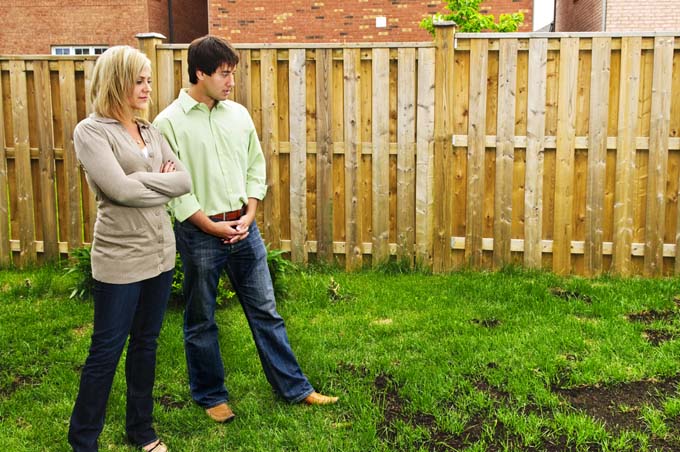Chances are that after the long winter, there are at least a few patches in your turf that are sparse, or completely bare.
Those spots can lend themselves to erosion, and spoil the overall appearance of your lawn. Fortunately, there are some fairly easy steps you can take to thicken or replace the grass in such areas.
First off, you will want to completely clear the area of anything but established sod. This means any leaves, twigs, dead grass, or weeds must be raked out before you begin the process or repairing bare patches.

We link to vendors to help you find relevant products. If you buy from one of our links, we may earn a commission.
This will help to ensure that the new grass you are about to put down will get the fullest possible amount of sunlight, as well as prevent the possibility of unwanted fungal growth later on.
Next, you will need to sow your seed. If possible, try to select a type seed of seed that is of the same type or very similar to that which is growing throughout the rest of your lawn.
For example, if you have mostly bluegrass, don’t patch with rye or fescue, as repaired patches will be noticeably different from the rest of the lawn.
If your grass is already of a mixed variety, you can simply reseed with a basic mix intended to grow well in your climate region. Note that I prefer a mixed lawn myself, though many people despise this option.
I also like to incorporate white clover into the mix like folks used to do from the 1940s through 1970s. Why? It’s a legume, and beneficial bacteria that attach themselves to the roots extract nitrogen from the air and make it accessible to the clover and other nearby plants.
That being said, my gardening style is more informal and eclectic than that of many gardeners out there, so I can get away with this.
To lay the seed down, use either a pull-behind or hand-held spreader to help ensure that you achieve even coverage.
You can also put down a starting fertilizer at this point, if you want to give the new grass a little extra boost. Make sure, however, that the fertilizer you apply is intended for new grass, as products meant for use on established sod contain enough nitrogen to harm new grass seed.
Once you have applied the seed and fertilizer, the rest is simply maintenance and patience.
If you have a large area that you are patching, or if part of the area is on a slope, consider using a seed blanket to keep the seed from washing away. On the other hand, if you are only reseeding small, mostly flat patches, this won’t be necessary.
You will, of course, need to water your new seed every day until it germinates. A sprinkler with a timer may be well worth the investment if you don’t have time to water the new grass daily.
You will also need to make sure that the areas you have re-seeded remain clear of too many leaves, branches, or other debris during this period.
If all of this sounds like more work than you want to get yourself into, you could also give any one of a wide range of patching products available on the market today a try. These products will contain seed, fertilizer, and mulch all in one, and they are nearly foolproof to grow.

While these patching compounds do still require daily watering, they are much more forgiving if you miss a day, because the mulch that makes up a large part of these mixtures will help to retain water longer than ordinary seed will on its own.
Keep in mind, however, that these products should only be used to patch small areas, as there is very little chance that they will match with the mix of grasses that is already making up your lawn.
© Ask the Experts, LLC. ALL RIGHTS RESERVED. See our TOS for more details. Uncredited photos: Shutterstock.